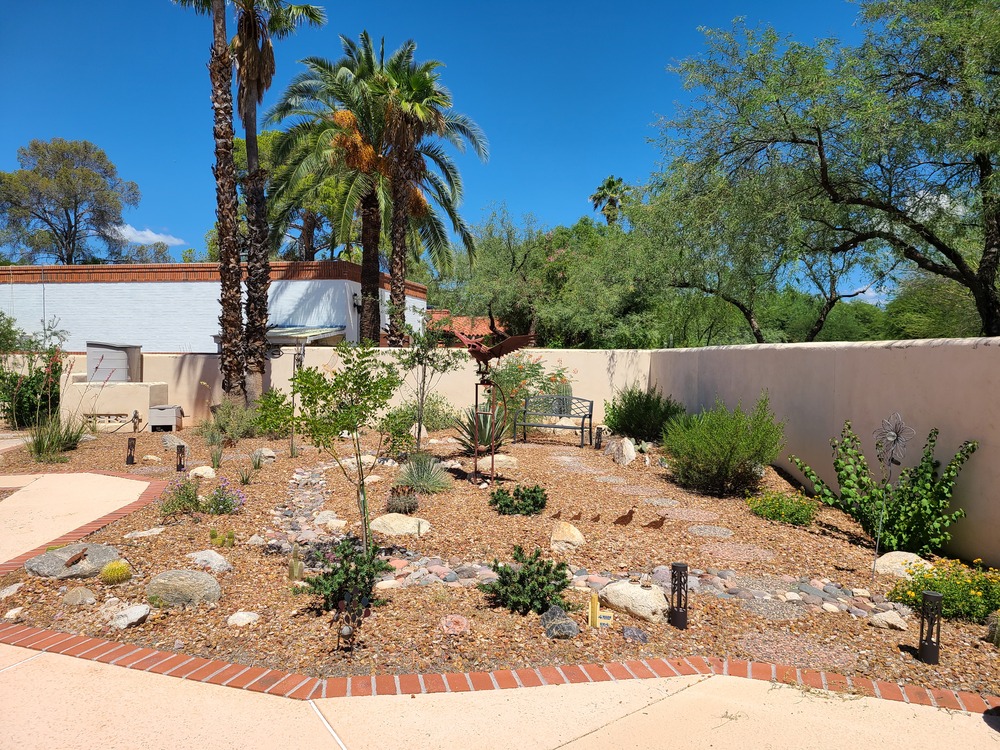Local Example: Removal of a mid-town pool
Information provided by Plácido dos Santos
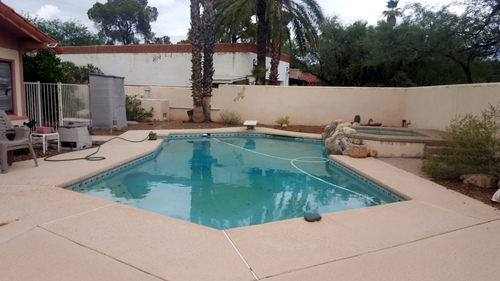
I purchased a home in midtown Tucson in 2000. It was built in 1946 and had a pretty big in-ground pool that was installed around 1993. I didn’t want a house with a pool, but the old place was just right in many other ways and the pool really looked beautiful in the back yard.
Over time, pool maintenance became increasingly tedious. With a love for nature and wildlife, I especially disliked having to remove dead lizards from the bottom of the pool and the skimmer. And the costs, beyond the chemicals, kept growing as the pool got older. I learned that pools have numerous plastic and rubber parts that wear out regularly. Replacement prices of these specialized pool parts usually felt like a rip-off. Besides chemicals and basic supplies, I found myself having to pay for other things that I initially did not expect. These included the following:
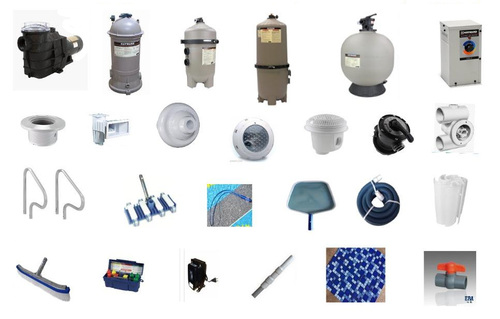
- DE (diatomaceous earth) filter unit ($800 - about 7 year life)
- DE filter internal membranes ($150 - 3 yr life)
- Pool cleaner robots ($700 - avg 2 yr life)
- Pole leaf skimmer nets ($35 - 2 yr life)
- Jandy valves ($60 - about 8 year life)
- System electrical timer ($150 - 10 yr life)
- Flex backwash discharge tubes ($35 - 2 yr life)
- Acid washes ($250 - every 6 years)
I also had to replace various small but expensive parts on a never-ending basis (mostly plastic parts, e.g., filter baskets, filter lids, in-pipe backflow preventers, O-rings, vacuum heads and tubes, silicone grease, etc.). These typically had 1-3 year lives, and the average annual cost of them was $100-$200 or more.
I did virtually all maintenance on my own, with no labor costs except for replacement of my DE filter and acid washes. Still, my average annual costs for the pool were close to $2,000. If I had a maintenance service or contracted someone every time something went wrong, these costs would have been much higher. And – this was no surprise to me – the electricity needed to circulate the pool water was the highest maintenance cost of all. This energy cost really boosted my summer electric bills.
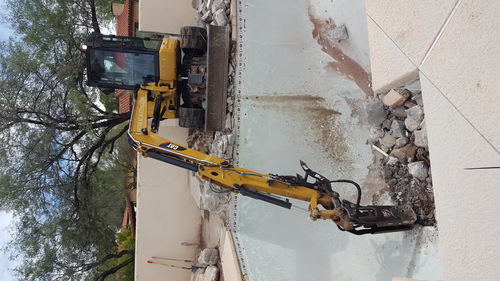
And what about my time? There were lots of maintenance tasks throughout the year like removing leaves, cleaning the skimmer, vacuuming the bottom, replacing worn out parts, backwashing the DE filter, annual cleaning of the filter membranes, testing water quality, adding acid to reduce the pH, scrubbing algae off the bottom and sides, and making the dreaded expensive trips to pool supply stores.

I found myself enjoying the pool less and less. Two years I calculated my “cost per dip”… about $250! Eventually, an entire swim season would pass without me going in. I would jump in the pool in the fall and swim a couple laps before preparing it for winter, just so I could tell myself I had used it.
When the pool reached 25 years old, it needed re-plastering and was being invaded by roots from a mesquite tree that had reached the water by creeping under the concrete deck around the pool. I considered having a total pool rehab, and was quoted estimates of $7K to $12K.
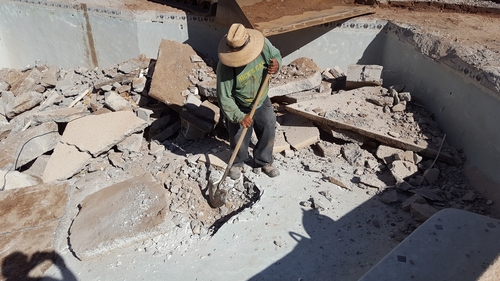
After owning the pool for 18 years, I came to realize that a pool is a hole in the ground that you throw water, money, energy and time into. By 2018, I wanted it gone so I could use my yard for other things that seemed more gratifying and environmentally appropriate for the Arizona desert.
The cost to demolish and fill my pool with soil was $5K - at the time, a flat fee regardless of pool size. In addition, I had to pay $500 to repair a wall that the pool removal company had to break through to get their bobcat equipment into my yard.
I kept records of my pool-related costs and water use:
| Monthly water use with pool (2018) | Post-demo water use (2019) | |
|---|---|---|
| Summer peak use | 8 Ccf | 3 Ccf |
| Winter base use | 5 Ccf | 2 Ccf |
Removing the pool saved about 50 Ccf per year (37,400 gallons), which cost me about $120. In addition, my sewer bill was lowered by about $40 per year. On top of the monthly water savings, I avoided having to periodically empty it due to salt buildup. The pool held 22,000 gallons and between 2000 and 2018, I had to drain it about four times due to high TDS, uncontrollable algae problems, or the need for an acid wash.
The savings on my electric bill were much bigger:
| Monthly electricity use with pool (2018) | Post-demo electricity use (2019) | |
|---|---|---|
| Summer peak use | 1,100 kwh | 800 kwh |
| Winter base use | 600 kwh | 300 kwh |
Annual savings was about 3,600 kwh, which lowered my electric bill by nearly $450. Just two years before demolishing my pool, I had installed a variable speed pump, which reduced my summer electric bills by about 50%. If I hadn’t installed the efficient pump, removing my pool would have lowered my annual electric bills by more than $700.
Once the pool was removed, I contacted the county assessor’s office and told them my home no longer had a pool. This lowered the home’s full cash value and reduced my property taxes by about $50 per year.
I also contacted my insurance agent and informed them of the pool elimination. This lowered my annual homeowner’s insurance cost by about $100. I think the payback period for removing the pool was about two-and-a-half years, making this a very smart financial move. More importantly, I got my yard back and now have a lot more free time. I put in pavers and drought-tolerant landscaping, and after 3 years, it looks great. Instead of looking at my pool, I now sit under my shade structure and enjoy watching butterflies and hummingbirds feed off the flowers in my attractive landscaping. I wished that I had removed the pool sooner.
